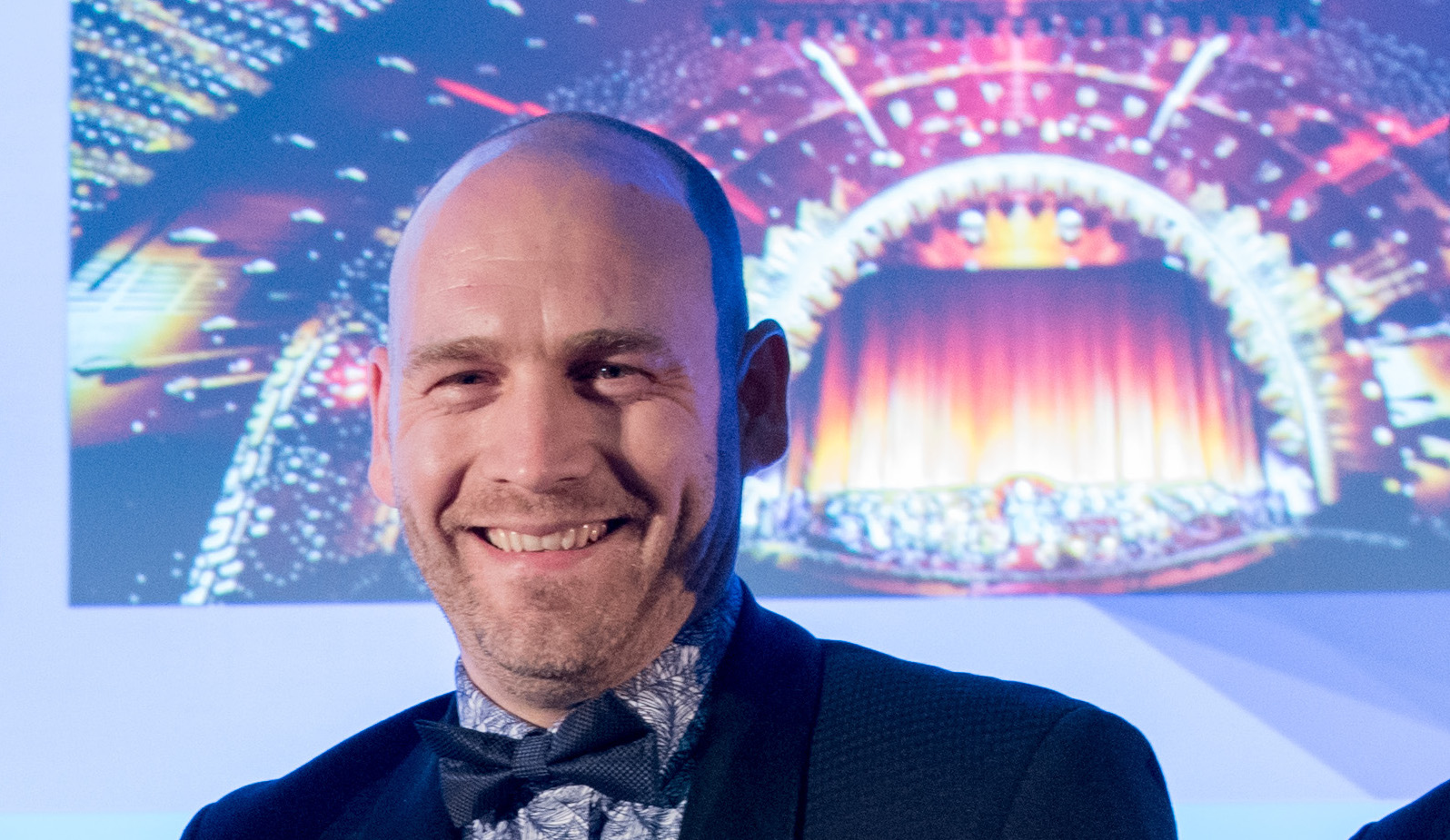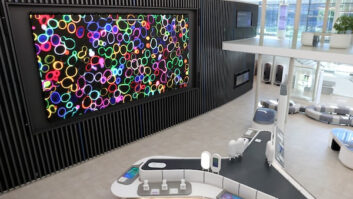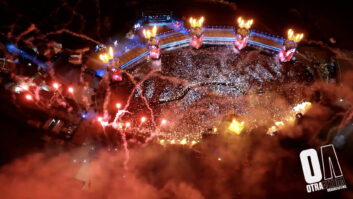
7thSense Design has experienced strong growth as technology has become increasingly pivotal to the storytelling aspect of theme parks and visitor attractions. We talk to managing director/CEO Matt Barton about how the company has evolved during a period of fast change for the sector and wider industry.
Tell me about your career background before 7thSense Design?
I had a varied career in early life with jobs ranging from shop assistant to circus performer. I ended up working for an international flight simulation and visual innovation company, working my way up through the ranks from administrator, to an apprenticeship in project management, to displays product manager, which included overseeing the development, launch and integration of an HDR projector and fully immersive display system for the F35 Fast Jet flight simulator.
Towards the end of my time in the simulation business, I began studying for an MBA, which was completed in 2014.
Outside of professional life, I’ve been the leader of a Scout Group for young people with disabilities based in Sussex (2nd Chailey) for a number of years. I’ve been involved with the group for most of my life and have seen changes in the way people with disabilities are integrated into society and welcomed into a global organisation like Scouting. As an active group, 2nd Chailey has visited many theme parks and visitor attractions over the years and I’ve seen first-hand examples of inclusion and exclusion alike – this is one of the many reasons I’m so passionate about improving the inclusivity and shared experience elements of attractions.
What attracted you about working for 7thSense?
I was very much interested in technology during my time in the simulation world, but I found it more interesting how technology could be used for leisure and entertainment rather than for military and flight applications.
A couple of colleagues (Adam Neale and Ian Macpherson) from the simulation company I was working for left to setup 7thSense and a few years later asked me to join the team and apply my skillset in the entertainment industry – the rest is history. It’s hugely rewarding to work for an agile, fast-growing company rather than a large behemoth corporation that the previous company I worked for had grown into.
You’ve been with the company six years now, how has it changed over that time?
We’ve experienced a lot of growth – the company was five people strong when I joined, and now we are over 30. As well as growing in number to keep up with the demands of the industry, we have become smarter and more efficient – adopting processes to manage large orders and large customer businesses while retaining the agility and focus on service and support that has defined us as a company since inception.
In recent years, our operation has expanded to include two North American offices in Detroit and Orlando, which has really allowed us to maintain exceptional service standards across all timezones, and support a product range that’s continually developing and diversifying for the different markets we serve.
What are some of the biggest tech developments you’ve seen during your time at 7thSense?
We’re lucky enough to be in an area of technology that develops at a fast pace, and as an innovation-led software company, we’re always on the leading-edge of these developments. We’ve been able to take quick advantage of faster and more expansive Solid State Drive technology, higher performance graphics cards and incredible developments in data transmission speeds – both internal and via network.
Among the many benefits this has presented to our business, it’s enabled us to serve uncompressed, high bit-depth media to more channels from single servers, and to add a vast range of functionality across the product line.
You travel a lot in your role. Are there vast differences in the sectors you operate in around the world?
While we do operate globally, we operate in a tight industry and I have the pleasure of running into many of the same faces in different places around the world, from master planners to installers.
Our end user locations present significant cultural differences, not to mention environmental differences. We have seen huge budget variations around the world in recent years but one thing does remain consistent irrespective of location – there continues to be a general desire across the industry for the quality to be right up there wherever in the world you go, the bar is constantly being raised and that’s a challenge we relish.
Working with the kinds of eye-catching technologies you do, when was the last time you were truly blown away by a technology or solution you saw?
The imagination and the ever-innovative ways that the creative people in our industry come up with to use technology on projects we’re involved in continually blow me away.
I’m a displays guy, so I find myself incredibly critical of display quality – particularly contrast, motion blur and resolution. One project that really impressed me by overcoming these issues was 3D Live’s ‘Holographic’ 3D LED Display technology as demonstrated in the Mass Effect: New Earth attraction in California, and has been recognised with a Thea award for Innovative Technology. The contrast that’s achieved and the brightness of the display are unparalleled and make the sense of immersion in the 3D environment they are creating some of the best I’ve ever seen.
Another mind-blowing example of technology in action is Pirates of the Caribbean: Battle for the Sunken Treasure at Shanghai Disneyland. The sheer scale of this experience took the idea of immersion to another level.
What area of technology do you think is currently the most dynamic and fast-changing?
Data transmission speed continues to open new doors every day and we are also seeing some display technologies changing very fast. For example, flexible displays – I foresee these being much more important to our industry in the future.
I believe augmented reality has a place in our industry but we are yet to see the ideal display technology to best support the many opportunities that AR has to offer.
How do you approach the balance between creating shared experiences and greater personalisation? Is it one or the other or can they coexist?
I believe they have to co-exist. I think there are many different ways of balancing this and we will see many new attractions that feature new ways of doing this in the next few years.
The ability for everyone to follow the same storyline yet still have their own ‘personal twist’ is very exciting. We are seeing attraction ‘lands’ being built where attendees have a personal experience up to the point of getting on the ride – I see the future of this extending the personalised experience into the ride itself. There is a balance to be had to make sure the ride is enjoyable for everybody and this will be one of the hurdles to get over that storytellers will have to find new and interesting ways to tackle. Our job as technologists is to support them in doing so, this is one of the areas of industry that truly excites me and 7thSense enjoys working with creative companies to establish the best technology solutions for this purpose.
Are there any downsides to the greater emphasis that is now placed on creating memorable experiences in AV?
The risk of using technology for the sake using technology is always there.
Amazing things can be achieved with modern technology, but there still needs to be a great story behind the technology veil.
It’s the story that makes the experience memorable, the best use of technology is seamless storytelling where the technology augments but doesn’t dominate the experience. To achieve this one has to know when to stop – making sure that if you’re showing an ancient artefact or story that has its own tale to tell, you don’t degrade or dilute that by swamping it with technology that does not add to story itself.
How do you hope to evolve the business over the next few years?
This is an incredible time for our industry – there are so many new parks and attractions in development.
I’m excited to be part of a team at 7thSense that’s supplying technology into these parks and attractions, and am focussed on ensuring we have a global presence that can support the industry’s growth. We’re planning to grow our North American operation and other global locations as part of this.
7thSense is continually evolving and key to this is our flexibility and dynamism. We have a number of new products coming to market soon that we believe will continue to serve the market and prove the performance of the business – watch this space!







